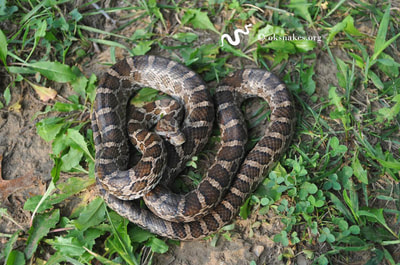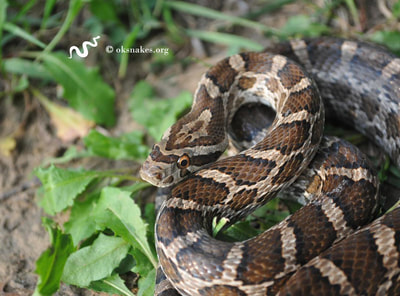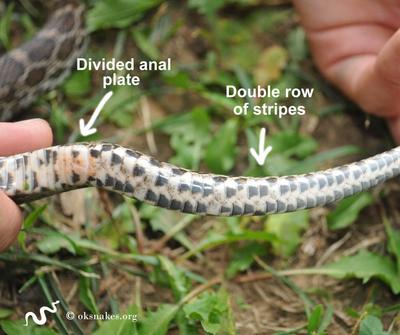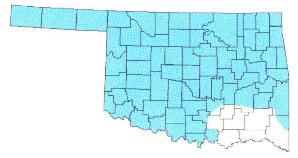Great Plains ratsnake
Pantherophis emoryi
Pantherophis emoryi
HARMLESS
Description:
Tan to brown body with dark blotches on its back and sides. The belly is checkered and it has stripes under its tail. With a pattern and coloration similar to the prairie kingsnake, the great plains ratsnake has a few differences: its scales are weekly keeled and the anal plate is divided.
Size:
Adults 24 - 36 inches (61 - 91 cm)
Prey:
Rodents, bats, and birds
Reproduction:
Mates in early spring and lays a clutch of 5 - 20 eggs in mid-summer. Hatchlings are 10 - 12 inches (25 - 30 cm) long.
Habitat:
Wooded areas, barnyards, abandoned houses, and rocky hillsides
Other Information:
This snake is mostly nocturnal and is an excellent climber. It is often seen in trees, searching for its prey. Like all ratsnakes, it is prone to vibrating or buzzing its tail when excited or disturbed.
Why doesn't the range map show this species in my county?
Description:
Tan to brown body with dark blotches on its back and sides. The belly is checkered and it has stripes under its tail. With a pattern and coloration similar to the prairie kingsnake, the great plains ratsnake has a few differences: its scales are weekly keeled and the anal plate is divided.
Size:
Adults 24 - 36 inches (61 - 91 cm)
Prey:
Rodents, bats, and birds
Reproduction:
Mates in early spring and lays a clutch of 5 - 20 eggs in mid-summer. Hatchlings are 10 - 12 inches (25 - 30 cm) long.
Habitat:
Wooded areas, barnyards, abandoned houses, and rocky hillsides
Other Information:
This snake is mostly nocturnal and is an excellent climber. It is often seen in trees, searching for its prey. Like all ratsnakes, it is prone to vibrating or buzzing its tail when excited or disturbed.
Why doesn't the range map show this species in my county?



